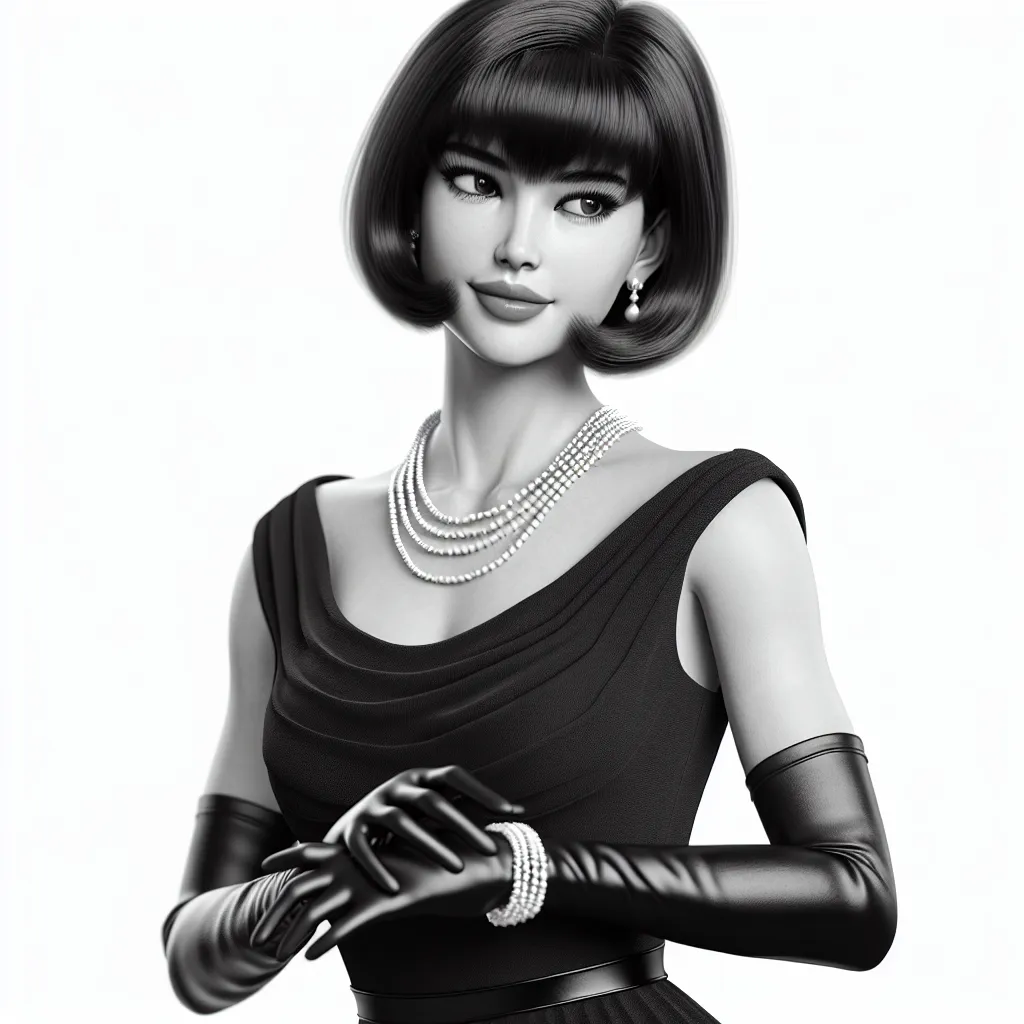
Iconic Fashion Moments of the 20th Century
The Little Black Dress: A Timeless Icon
The little black dress, a timeless icon that has made its mark on the fashion industry for over a century, continues to hold a significant place in the hearts and wardrobes of women around the world. This iconic piece of clothing has transcended time and trends, evolving from its introduction by Coco Chanel in the 1920s to becoming a staple in every woman’s closet.
Coco Chanel’s vision for the little black dress was to create a versatile, elegant, and accessible garment that would cater to the modern woman. The simple yet sophisticated design allowed for endless possibilities in styling, making it suitable for various occasions, from cocktail parties to evening events. The fashion world embraced the little black dress, solidifying its status as a timeless classic.
Throughout the 20th century, the little black dress became synonymous with style icons such as Audrey Hepburn, who famously wore a Givenchy black dress in the film “Breakfast at Tiffany’s.” This cinematic moment catapulted the little black dress into popular culture, cementing its status as a must-have item for women of all ages.
The little black dress continues to undergo reinterpretations by renowned fashion designers, incorporating modern twists while honoring its classic silhouette. From innovative cuts to luxurious fabrics, this iconic garment remains relevant in contemporary fashion, captivating new generations of women.
In conclusion, the little black dress stands as a testament to timeless elegance and versatility. Its enduring appeal and ability to adapt to changing fashion landscapes make it an indispensable wardrobe essential for women worldwide. As fashion continues to evolve, the little black dress maintains its status as an enduring symbol of style and sophistication.
Remember to optimize your article for relevant keywords such as “little black dress,” “fashion icon,” “timeless elegance,” and “Coco Chanel.”
The Birth of Denim: From Workwear to Fashion Staple
The Birth of Denim: From Workwear to Fashion Staple
Denim, a sturdy cotton twill fabric, has undergone a remarkable transformation from its humble beginnings as workwear to becoming a timeless fashion staple. Its journey from being the fabric of choice for miners and cowboys to a symbol of rebellion in the 1950s and a versatile fashion statement in the present day is a captivating story of cultural evolution and sartorial innovation.
The 20th century witnessed several iconic fashion moments that contributed to the popularization of denim. One such pivotal moment was the introduction of Levi Strauss & Co.’s blue jeans in 1873, which revolutionized the concept of durable work pants. These “waist overalls,” as they were originally called, soon became synonymous with the American pioneering spirit and the ethos of hard work.
As the 20th century progressed, denim transcended its utilitarian origins and gained a rebellious aura, largely due to its association with Hollywood stars like James Dean in “Rebel Without a Cause” and Marlon Brando in “The Wild One.” These actors brought denim to the forefront of mainstream fashion, and it became an emblem of youthful nonconformity and effortless cool.
By the 1980s and 1990s, denim had firmly established itself as a global fashion phenomenon. Designers started incorporating it into their high-end collections, and it became the fabric of choice for casual and everyday wear. The versatility of denim was showcased in various forms, from classic blue jeans to denim jackets, skirts, and even accessories, catering to diverse fashion sensibilities.
Today, denim continues to reign supreme in the fashion world, constantly reinventing itself to reflect contemporary styles while retaining its timeless appeal. From distressed and embellished denim to sustainable and eco-friendly iterations, the fabric remains a symbol of versatility, durability, and effortless chic.
In conclusion, the evolution of denim from its origins as workwear to its current status as a fashion staple underscores its enduring influence and adaptability. Through the 20th century and beyond, denim has embodied the spirit of cultural rebellion, individuality, and classic American style, solidifying its place as an iconic fabric in the world of fashion.
The Evolution of Sneakers: From Sports to Street Style
One of the most iconic fashion moments of the 20th century was the evolution of sneakers from functional sports footwear to a must-have element of street style. The rise of sneakers to the forefront of fashion represents a shift in cultural attitudes towards casual, comfortable footwear.
In the early 20th century, sneakers were primarily designed for athletes and sports enthusiasts. However, their transition into mainstream fashion began in the 1970s and 1980s, with the emergence of iconic sneaker brands such as Nike, Adidas, and Puma. These brands not only catered to athletes but also started to influence street style and urban fashion.
The 1980s saw the rise of sneaker culture, with basketball legends like Michael Jordan and his eponymous Air Jordan line propelling sneakers into the fashion spotlight. Sneakers became associated with status, self-expression, and rebellion, as young people embraced them as a symbol of individuality.
As the 20th century progressed, the versatility of sneakers became apparent as they transcended gender and became a unisex fashion staple. From the classic Converse Chuck Taylor All-Stars to the technological innovations of modern-day sneakers, the evolution of this footwear has been marked by an ever-growing fusion of sports and style.
Today, sneakers are not just a fashion statement; they have become intertwined with the ethos of streetwear and are a symbol of cultural movements. The evolution of sneakers from sports to street style reflects the changing landscape of fashion and the ongoing influence of sports culture on the industry.



